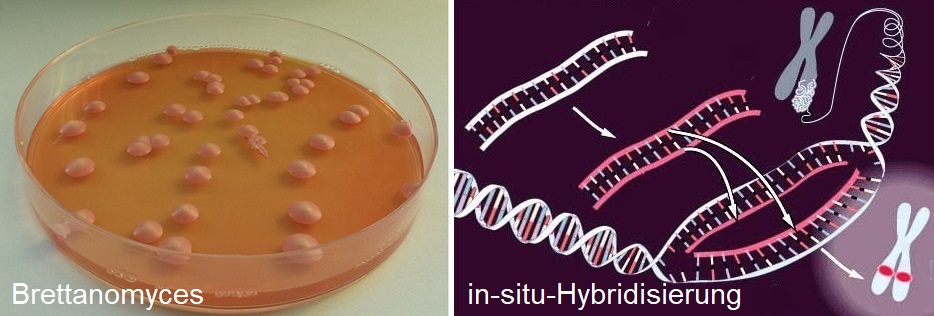Abbreviation for "Peptide Nucleic Acid - Fluorescence In Situ Hybridisation". A peptide is an organic chemical compound resulting from a combination of several amino acids arranged in a defined order (sequence). It is a medical-diagnostic analytical method with which certain DNA and RNA sequences can be localised in tissues, cells, cell nuclei and chromosomes in minute quantities. An artificially produced probe made from a nucleic acid is used, which "hybridises" the nucleic acid to be detected, i.e. binds it and makes it visible. The term "in situ" refers to the fact that the detection is carried out directly in the respective structure and not biochemically in a test tube. The PNA probes used are labelled with a fluorescent dye. The PNA-FISH method is primarily used in medicine to detect and identify pathogens in human blood.

Growing bacteria and yeast cells also produce an abundance of RNA sequences. In viticulture, the PNA-FISH method is therefore used, for example, to localise the usually undesirable yeast species Brettanomyces bruxellensis in wine and the resulting wine defects mousiness and horse sweat (Brett). Compared to other similar methods, the application is far less cost-intensive and can be carried out quickly. In this case, visualisation takes place in the individual yeast cell. On the one hand, a statement can be made about the general presence and also about the bacterial count and its status. If Brettanomyces is suspected, it is sufficient to take a litre of wine from the barrel or the contents of a bottle. The method is also suitable for the detection of many other microorganisms. In the future, it will probably also be possible to detect many other microbiological wine defects.
Brettanomyces: By Bojan Žunar - Own work, CC BY-SA 4.0, Link
Graphic: By Thomas Ried - National human genome research institute, CC BY-SA 3.0, Link
Voices of our members

I have great respect for the scope and quality of the wein.plus encyclopaedia. It is a unique place to go for crisp, sound information on terms from the world of wine.
Dr. Edgar Müller
Dozent, Önologe und Weinbauberater, Bad Kreuznach